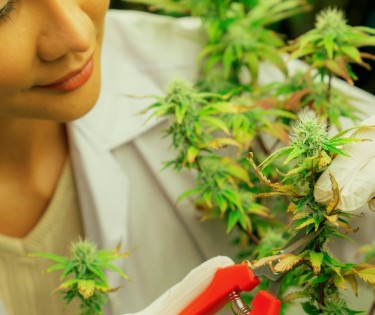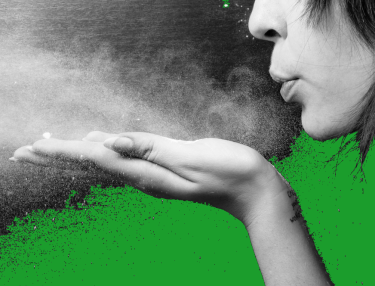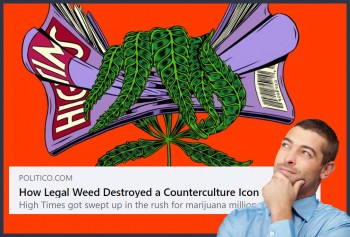
While most occupations avoid headline-grabbing gore, innocuous vocations still inflict insidious damage through airborne threats eroding lung function over years. The phantom menace of ambient workplace toxicity carries an untold toll - including risk of sudden asphyxiation when cumulative exposures trigger acute attacks.
Consider "baker's lung" - an asthma-like inflammation that develops from inhaling airborne grain and flour particles. This chronic disease forced many passionate artisans to abandon their craft over suffocating distress.
Hair stylists face analogous respiratory risks from potent chemical fumes permeating salons daily, as do factory workers breathing manufacturing particulates. The hazardous substances differ but the outcome feels identical - airways constricting and careers crushed through no direct misstep of their own.
In most cases, safety guidelines and equipment lag behind scientific understanding of emerging environmental illnesses. Thus, regulatory cracks allow once benign-seeming jobs to turn tragic before precautions adapt. Attributing blame becomes complex when unintended aspects of simple work carry unintended negative health consequences over time.
This ongoing issue underlies the first reported death of a cannabis industry worker recently - a 27 year old woman in Massachusetts suffered fatal asthma attack allegedly induced by workplace irritant exposure after previously managing her condition fine.
While the budding cannabis production sector hardly evokes hazards on par with industrial meatpacking or mine drilling, it still breeds its own singular risks, as regulators race to understand. When prohibition gives way to mass cultivation, new variables emerge.
So today, we will explore this tragic accident within its broader context - well-meaning workers undone by latent threats in substances at first sniff seemingly harmless enough. But when health hangs in the balance of unknowns, caution takes on grave urgency.
Let us honor this woman's memory then by scrutinizing the growing pains of an industry rushing to meet demand. If preventing the next victim means pausing enthusiasm for patient access, the tradeoff seems clear. For in the end, no reefer revolution succeeds on backs broken laboring in shadows.
First, do no harm.
A Tragedy can Spark Positive Change
This young woman's tragic death represents a watershed moment for the nascent cannabis industry to mature its ethical priorities around worker safety. While an individual loss first and foremost, her unnecessary passing will undoubtedly save future lives through forcing regulatory awareness and accountability.
Inspectors noted the facility had not established respiratory protections for staff handling volumes of agitated cannabis dust hazardous to compromised systems. But in fairness, few viability guidelines existed around large-scale commercial cultivation when early operators raced to capitalize on legalization. But playing the devil’s advocate – it might be kind of obvious to ensure worker’s protections in an enclosed space with plant matter floating in the air.
The vast underground cannabis production knowledge understandably emphasized concealment and profitability over governance with workplace hazards an afterthought. Now that full legitimacy and scalability replaces shadowy improvisation, codifying revised best practices falls on regulators.
This expectant shift from illicit business to regulated corporate enterprise was bound to endure painful lessons given the pace of social change outpacing bureaucratic preparations.
But through those legislative growing pains, let us at least extract meaning from suffering to bless broader communities. Industry crucibles should purify, not corrupt, our integrity.
With cannabis governance still evolving conceptually, what better opportunity to embed safety-first regulatory models before harmful norms cement? Other sectors have learned similar lessons too late after normalizing harm. Cannabis need not repeat history's errors.
This tragedy powerfully demonstrates why writing compassion into policy protects all. And if legacy operators wish to speak convincingly about ethical industry standards, addressing worker welfare makes the perfect starting point.
May this loss provide the urgent impetus to build cannabis production regulations correctly the first time as exemplary frameworks prioritizing people over profits. That outcome would make this woman's unwarranted death not in vain, but an indispensable catalyst bettering society.
Understanding A Hidden Epidemic: The State of Asthma
While the cannabis worker's death has raised concerns around respiratory risks from mass cultivation, her underlying asthma represents an often minimized health crisis facing over 25 million Americans today. Asthma proves one of the nation's most common, underestimated and deadly chronic conditions.
Over 10% of American adults suffer asthma currently, with rates highest among minorities and women. Triggers range from allergy irritants to pollution to respiratory infections. But outcomes can quickly turn fatal without proper prevention and treatment.
In fact, a shocking 39% of asthmatic adults reported experiencing attacks recently, signaling vast unmet care needs. And after decades of declines, death tolls are actually rising again, taking ten lives daily.
Behind those abstract figures lie needless everyday suffering and lost livelihoods as asthma constricts once active lives. Simple tasks turn laborious amidst terrifying bouts of breathlessness. And the condition worsens over time without tight symptom control.
Too often the social stigma around asthma invites blame, minimizing its trauma as an imagined ailment instead of recognizing its lethal reality. Yet epidemiology shows no group immune from onset as inflammation disables airways without warning.
Even physically fit individuals find themselves unexpectedly hospitalized, bedridden for weeks after sudden attacks. If the pandemic taught anything, breath stands among our most precious assumed attributes until compromised.
And marginalized groups shoulder the harshest asthma impacts, facing eroded quality of life and early death - especially Black women. These unjust outcomes demand policy attention on par with splashier diseases like COVID but of course, the treatment options aren’t always pharmaceutical – there are practical methods of working with the lungs and strengthening it. In fact, asthmatics should totally do breathwork!
Yet care infrastructure remains sorely lacking for proper asthma management beyond quick-fix inhalers and emergency interventions. Patients lack sustained access to preventative anti-inflammatory regimens, home air purifiers, allergen avoidance education and mental healthcare.
In this woman's case, the risks tragically proved insurmountable given workplace irritant exposures. But better safety regulations alongside elevated clinical treatment could have prevented such catastrophe.
Ultimately her death illuminates twin priorities - destigmatizing asthma as easily managed while strengthening societal infrastructure supporting patients long-term. Because the occasional frightening attacks hide in plain sight chronic day-to-day ordeals for millions that our healthcare system continues neglecting at their peril, sometimes fatally.
The Sticky Bottom Line
This young woman's sudden passing at 27 over an invisible workplace threat sparks calls to balance cannabis reform zeal with cautions of unintended consequences from breakneck policy change. But ultimately all sides share the goal of preventing such needless loss.
And from crisis wisdom crystallizes. Asthma safety protocols will now enter cultivation facility regulations to protect other vulnerable industry laborers. Her legacy thus uplifts colleagues through institutional evolution she helped initiate.
The sticky truth remains that prohibition's end creates new dialogue around health tradeoffs from increased access and production. But reasonable guardrails arise through compassionate debate, not scare tactics demonizing the plant itself.
With cannabis, as all medicines, responsible frameworks honoring human dignity over profit must prevail. And each tragedy underlines the work remaining to place community wellbeing first amidst commercialized healthcare.
Yet as we walk this complex path together, broader perspective seems vital too - that life's impermanence claims all fates regardless of circumstance. However graciously lived, no mortal bypasses death in the end.
So this incident should remind us as bystanders to love boldly, forgive freely, speak kindly, waste no days in grievance. For in between first breath and last, meaning weaves through bonds nurturing each other against the endless entropy.
Few depart expecting their curtain call so soon or suddenly. But in that obscurity lies wisdom to consciously cherish each transient now beyond assumed tomorrows. The thriving cannabis movement must model this mindfulness.
Honor this woman then by embedding vigilance into your protocols and presence into your days. Uplift colleagues through purposeful work culture. Allow loss to reveal life's urgency. The rest flows through awakened hearts connected to transient blessings blooming all around if we pause to perceive them.






